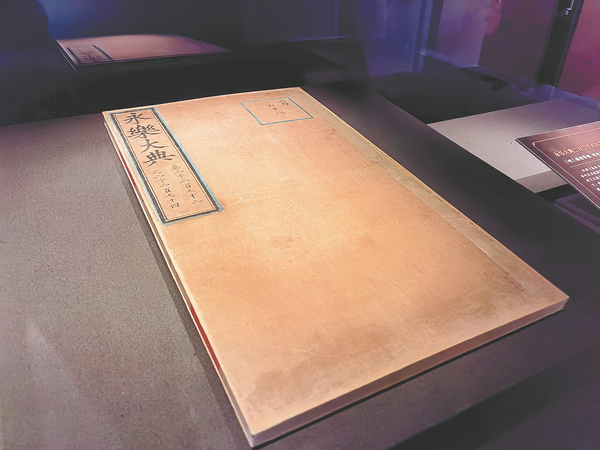

The restoration of a precious copy of the Yongle Dadian ("Yongle encyclopedia") is being celebrated through a special exhibition at the National Library of China in Beijing.
First compiled in the early 15th century during the Ming Dynasty (1368-1644) following an edict by the Emperor Yongle, this set of handwritten texts is often considered the largest paper-based encyclopedia ever written. It included an estimated 370 million Chinese characters, and consisted of 22,937 volumes in 11,095 copies.
The original edition went missing in history, though a 16th-century duplicate survived into the 19th century, mostly intact. Many more volumes were subsequently destroyed or got lost in upheaval. Today, only about 400 survive, and every one is considered a literary treasure.
When a volume on the Chinese character hu (lake) returned from Canada to be housed at the National Library of China in 2013, it was welcomed by excited librarians, who had been waiting to restore its aged pages.
In 2021, the national library, the China Foundation for Cultural Heritage Conservation and ByteDance, the parent company of short-video platform TikTok, or Douyin in China, jointly established a fund to restore the document.
About 10 million yuan ($1.43 million) was spent, not only on the restoration of the text, but also on training restorers, digitalizing the work and creating associated public education programs.
The fund has also sponsored the restoration of 104 other ancient books from 10 libraries nationwide.
The fruits of this project were apparent at the exhibition, in which 39 recently restored ancient books were on display. The exhibition, launched in the national library last week, will last for two months.
"This project explores a path for how public institutions and other sectors of society can closely cooperate on the preservation of cultural relics," says Xiong Yuanming, director of the national library.
Xiong says many new methods were utilized in the restoration of the Yongle Dadian volume. In previous restorations of other volumes, silk pieces available on the market that were similar to those in the original version were used. But for this project, restorers conducted a detailed materials analysis and were able to weave textiles specially tailored to resemble those used in the past.
Other exhibited books are also milestones in Chinese literary history. For example, the Shanghai Library presented an 1848 print edition of Yinghuan Zhilue ("brief record of the globe"). Written by Xu Jishe, an official in coastal Fujian province who was in contact with foreign missionaries, merchants and diplomats, the monumental work revolutionized understanding of world geography among Chinese literati and offered key inspiration for Japan's modernization drive.